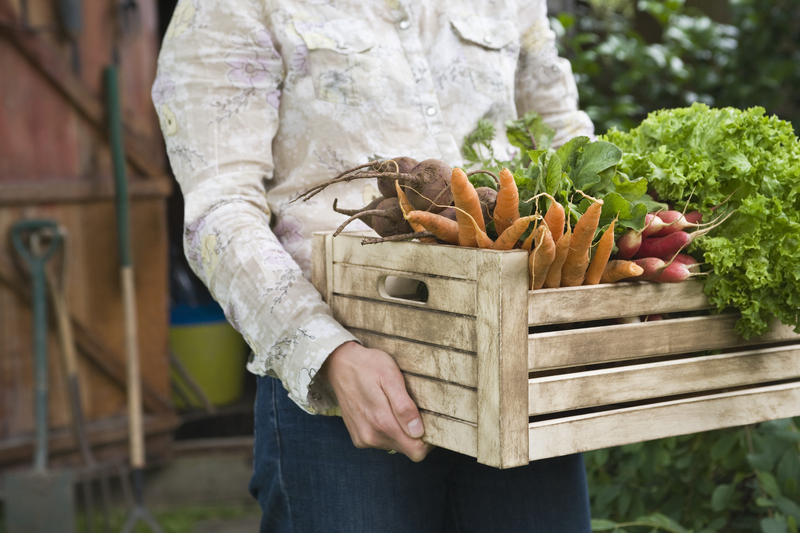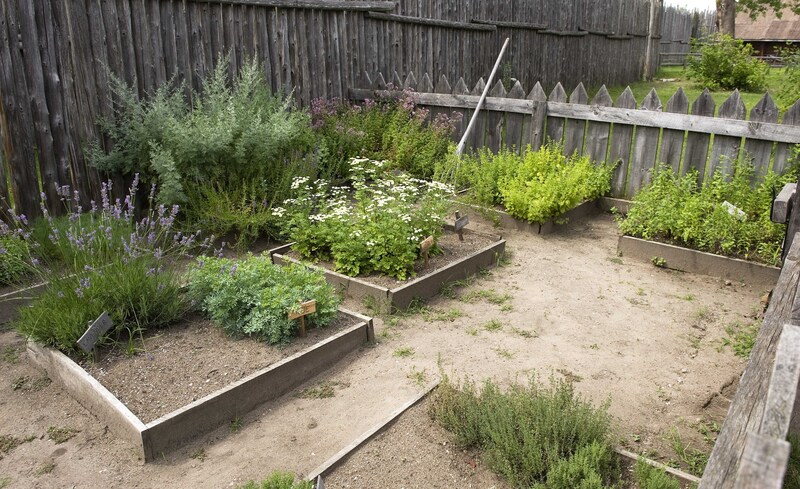Reducing Wind Stress in Your Botanical Haven
Posted on 18/06/2025
Reducing Wind Stress in Your Botanical Haven: A Comprehensive Guide
Gardening is both an art and a science, where attention to environmental factors can mean the difference between flourishing foliage and struggling greenery. Among these often-overlooked factors, wind stress in your botanical haven can significantly impact the vitality of your plants. If you've noticed tattered leaves, stunted growth, or snapped stems in your garden, it's time to address the invisible force of wind.
In this informative article, we'll explore how to minimize wind stress in gardens, greenhouses, and outdoor plant collections. You'll discover practical strategies, scientific insights, and creative design tips to shield your verdant sanctuary from the damaging effects of wind. Let's delve into protecting your botanical haven, ensuring your plants thrive in a serene, sheltered environment.

Understanding Wind Stress in Your Botanical Sanctuary
Wind stress refers to the physical strain plants experience when subjected to constant or gusty air movement. Unlike beneficial gentle breezes which can promote stronger stems and air circulation, excessive wind:
- Physically damages foliage and stems, causing tears and breakage.
- Increases water loss through transpiration, quickly dehydrating both leaves and soil.
- Disturbs pollination and fruit set in flowering plants.
- Interferes with efficient nutrient uptake as roots struggle to anchor.
- Encourages topsoil erosion, stripping away vital nutrients.
With storms becoming more frequent and unpredictable in many regions, reducing wind stress in your botanical haven has never been more crucial.
Symptoms of Wind Damage in Plants
- Ripped, browned, or curled leaf edges
- Bent or broken stems and branches
- Wilting despite adequate soil moisture
- Reduced flowering or fruiting
- Uprooted young seedlings
If you notice these signs, it's essential to take action to reduce wind stress on your garden and restore balance to your green oasis.
Principles of Creating Wind-Resilient Gardens and Greenhouses
Learning how to lessen wind damage in your botanical haven starts with understanding a few fundamental principles:
- Diversify barriers - Mix natural and structural windbreaks for layered protection.
- Observe wind patterns - Study prevailing wind directions throughout the year.
- Plan site orientation carefully - Position sensitive plants in the most sheltered spots.
- Select resilient species - Certain varieties naturally cope better with breezes.
Let's look at practical, proven steps that blend science with artistry to reduce wind stress in your botanical environment.
Effective Strategies for Reducing Wind Stress in Your Garden Haven
1. Installing Natural Windbreaks
Living windbreaks are the gardener's first line of defense against wind. They soften strong gusts, create microclimates, and often add beauty and biodiversity.
Choosing the Right Windbreak Plants
- Evergreen trees and shrubs: Conifers, hollies, and laurels provide year-round protection.
- Deciduous hedges: Hornbeam, beech, and hawthorn make effective seasonal barriers.
- Bamboo: Fast-growing and dense, ideal for quick windblock solutions.
Plant in staggered rows, allowing each layer to slow wind speed progressively. For maximum effect, combine tall trees at the back, with medium and lower shrubs or grasses in front.
Designing Layered Windbreaks
- Tall tree row: Breaks the force of incoming wind.
- Shrub and hedge mid-layer: Captures breezes that sneak past the taller line.
- Groundcover grasses and perennials: Anchor soil and prevent erosion at ground level.
2. Incorporating Structural Wind Barriers
Engineered windbreaks offer reliable protection, especially in exposed rooftop gardens or new landscapes where trees haven't matured.
- Slatted fencing: Allows some wind through, which reduces turbulence and vortex formation on the lee side.
- Trellis screens: Easy to install, particularly suitable for balconies and patios.
- Walls and pergolas: While solid, consider combining with climbing plants for beauty and effectiveness.
- Windbreak netting or shade cloth: Temporary solutions for urgent protection needs.
Tip: Never use solid, unbroken barriers exclusively, as these can create wind tunnels that intensify stress for plants downwind. Instead, opt for barriers that filter and diffuse air movement.
3. Creating Microclimates Within Your Botanical Haven
Capitalizing on the microclimates created by structures, trees, or even water features is a subtle yet powerful way to minimize wind exposure. For instance:
- Use garden sheds, glasshouses, or walls as windshields for susceptible crops or specimen plants.
- Cluster sensitive containers on the most protected side of your home or inside courtyards.
- Integrate water fountains which can slightly humidify and stabilize local air movement.
4. Using Raised Beds and Protective Mulches
Wind dries out exposed soil surfaces rapidly, placing roots under stress. Raised beds with protective barriers or edging can deflect low-level winds, while mulches retain moisture and prevent soil erosion.
- Wood chip or compost mulches: Shield soil surface and slow evaporation.
- Lawn edging or low windbreak fences: Surround vulnerable beds to act as an initial defense.
5. Staking and Supporting Vulnerable Plants
Young trees, tall perennials, and climbing vines often need extra help to withstand wind pressure. Proper staking reduces mechanical injury without restricting natural movement, which is necessary for robust growth.
- Flexible tree ties prevent girdling while allowing some sway.
- Guy wires for larger specimens provide anchorage during establishment.
- Ring or grid supports guide delicate stems upright.
6. Smart Plant Selection
When planning a wind-exposed botanical haven, always include species with natural wind tolerance. Consider:
- Grasses: Fountain grass, feather reed grass, and sedges.
- Native shrubs: Often adapted to local wind patterns.
- Low-profile or groundcover plants: Stay closer to the earth and less affected by wind.
- Drought-tolerant species: Less stressed by rapid moisture loss from wind.
Group more delicate and broad-leafed plants in the most sheltered sections of your garden, behind your wind-reducing barriers or structures.
7. Maintaining Soil Health and Hydration
Healthy, humus-rich soil acts as a buffer against wind dehydration. Incorporate organic matter to boost moisture retention and root resilience. Regular, deep watering ensures plants can cope with temporary stress during windy spells.
- Regularly replenish mulches in exposed areas.
- Avoid shallow watering which encourages weaker root growth near the soil surface.
- Use drip irrigation systems to deliver moisture directly to roots, reducing waste from evaporation.
The Science Behind Windbreak Placement
Effective wind stress reduction in your botanical garden relies not just on what you plant or build--but also where you place these features. Take time to assess:
- Prevailing wind directions and intensities throughout the year.
- Site-specific vulnerabilities, such as exposed slopes or open plains.
- Proximity to buildings or neighboring landscapes for available shelter.
A well-placed windbreak should start at least 2-5 times the mature plant's height upwind of your garden for maximum effect. For example, a 10-foot hedge provides considerable shelter for main beds positioned 20-50 feet behind it.
Keep in mind: Orientation is key. Always site windbreaks perpendicular to the most troublesome wind source.
Reducing Wind Stress in Greenhouse and Indoor Botanical Havens
Structural Strategies
- Install double glazing or polycarbonate panels to buffer your greenhouse from draughts.
- Seal gaps and vents against unexpected gusts, but maintain proper ventilation for plant health.
Interior Design Tactics
- Place sensitive plants on lower shelves or behind bulkier companions to limit air movement.
- Use fabric screens or mesh curtains as interior windbreaks between rows of plants.
- Cluster pots closer together during stormy days for mutual protection.
Long-Term Benefits of Reducing Wind Stress
Minimizing wind pressure in your botanical haven rewards you with:
- Healthier, more productive plants less prone to disease and dehydration.
- More efficient water use and less irrigation required.
- Reduced soil erosion and nutrient loss.
- Increased biodiversity as birds, bees, and butterflies find calm, supportive habitats.
- An aesthetically serene, enjoyable garden refuge for you and your guests.

Frequently Asked Questions about Reducing Wind Stress in Your Botanical Haven
Is wind ever beneficial for my plants?
Yes, gentle breezes strengthen stems, help pollination, and improve air circulation to prevent fungal disease. The key is balance--encouraging mild wind while mitigating destructive gusts.
How can I protect container plants from wind?
Group containers near a shielding wall, add pebbles or mulch to retain moisture, and stake tall stems. Move them indoors or into sheltered alcoves during severe weather.
What are signs a windbreak is working?
Observe less leaf damage, healthier new growth, and reduced soil erosion downwind of your barriers. Wind speed should noticeably drop behind your hedge or fence on breezy days.
Conclusion: Create a Botanical Haven That Thrives--Not Just Survives
Your garden or plant sanctuary is a living system, deserving thoughtful protection against the silent, persistent threat of wind. By using a combination of natural and structural windbreaks, choosing wind-tolerant plants, and caring for your soil, you will reduce wind stress in your botanical haven and promote lush, resilient growth for years to come.
Remember: Every windproofing effort contributes to a calmer, more sustainable landscape--one where both plants and people can flourish together.

